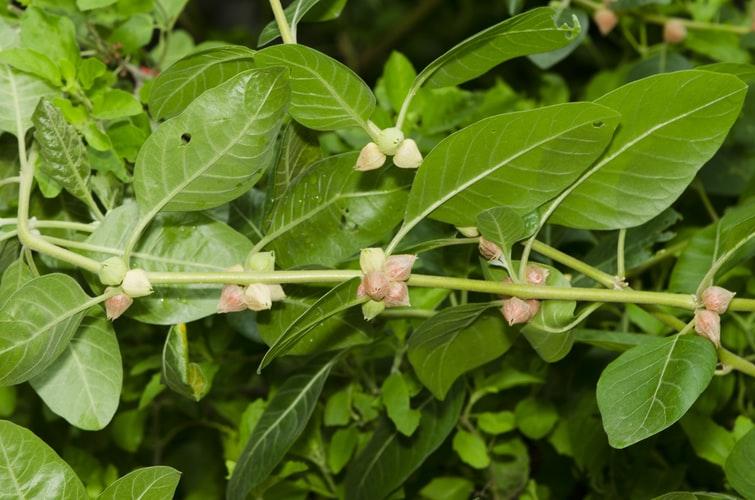
Ashwagandha
Withania somnifera
Basic Information
🌿 Family: Solanaceae🗺️ Zone: 9-12
Other Names:
- Indian Ginseng
- Winter Cherry
🌡️ Ideal Temperature : 65°F – 85°F
🔥 Heat Tolerance: Up to 100°F
❄️ Cold Tolerance: Down to 50°F
🌱 Type: Perennial
Layers
- Herbaceous
Functions
- Medicinal
- Wildlife Attractor
- Erosion Control
- Dynamic Accumulator
Pests
No pests associated with this plant.
Description
Ashwagandha is a small, woody shrub native to India, the Middle East, and parts of Africa. It grows up to 1.5 meters (5 feet) tall, featuring elliptical green leaves and small, bell-shaped yellow flowers that develop into red berry-like fruits. The plant is highly valued in Ayurvedic medicine for its adaptogenic properties, which help the body manage stress. It prefers warm, arid climates with well-drained soil and thrives in poor, sandy soils.
🌞💧 Sun and Water Requirements:
Ashwagandha requires full sun and prefers dry to moderately moist conditions. It is drought-tolerant once established and does not require frequent watering. Overwatering can lead to root rot.
✂️🫘 Methods to Propagate:
Ashwagandha is propagated through seeds. Sow seeds directly into well-drained soil after the last frost when temperatures remain above 20°C (68°F). Germination occurs in 2–3 weeks. Transplant seedlings once they are strong enough to handle.
🧑🌾👩🌾 When to Harvest:
The roots are harvested in late fall or early winter, around 150-180 days after planting, once the foliage starts to dry and die back. Dig carefully to extract the long, tuberous roots without damage.
Purpose
- **Medicinal:** Ashwagandha is known for its adaptogenic properties, helping to reduce stress and anxiety, boost energy, and support immune function. It is widely used in herbal medicine as a tonic for vitality.
- **Wildlife Attractor:** The flowers attract pollinators such as bees and butterflies.
- **Erosion Control:** Ashwagandha’s deep root system helps bind soil, making it useful for preventing erosion in arid regions.
- **Dynamic Accumulator:** The plant is known to extract nutrients from poor soils, which can benefit surrounding vegetation.